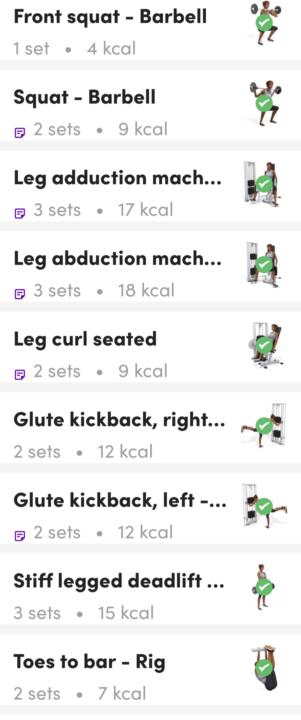Activity
Mon
Wed
Fri
Sun
Nov
Dec
Jan
Feb
Mar
Apr
May
Jun
Jul
Aug
Sep
What is this?
Less
More
Memberships
Awesome! Calisthenics (FREE)
354 members • Free
19 contributions to Awesome! Calisthenics (FREE)
Unlocking Handstands, Strength Gains & True Consistency - Oct. 2 Live Call Replay
All right, welcome to the Q&A! There are three main things I want to cover today—topics that came from weekly posts, questions I’ve gotten from athletes, and general things I see people struggle with. We’ll talk about: 1. Handstands—what’s the hardest and best part of learning them. 2. How to know when it’s time to make your workouts harder. 3. How and when to optimize your training. Handstands: From Crow to Crane to Balance Someone asked about moving from crow pose to crane pose. - Crow pose: balancing on your hands with bent arms and knees on your shoulders. - Crane pose: the same shape, but with straight arms. Crane is harder, especially on your wrists, because you have to lean much further forward. Here’s the good news: if you can do crane, it’s actually harder than holding a handstand, at least in terms of shoulder and wrist demand. I’ll soon be teaching a masterclass on handstands, but here’s the big picture: The 3 Stages of Handstand Training: 1. Beginners – Start with crow pose to learn hand balance, then tripod headstands to practice balancing legs in the air. 2. Wall Work – Practice chest-to-wall handstands. This is more effective than back-to-wall because it puts you in proper alignment. Aim to have only your nose and toes touch the wall. 3. Falling & Recovery – Learn how to fall safely, usually by turning into a cartwheel. This builds confidence and helps you commit to a full kick-up. From there, you progress to handstand bounces (small kick-ups and holds). The goal is to get more “time on hands,” so you can practice correcting balance instead of just falling. Spotting or partner assistance can also help. Knowing When to Progress Your Workouts How do you know when it’s time to make your workout harder? - If your goal is skill or technique: Move up when your form is clean and it no longer feels draining. - If your goal is strength: Use this test—if you could repeat the exact same workout in the evening after doing it in the morning, it’s too easy.

Thursday, Friday training.
Lower body Thursdays and upper body Fridays. First time getting six toe to bar and crow feeling strong yesterday. Pull ups, dips and L-sit seeing progress. Supported headstand is stable without the wall, but need the wall to hold forearm stands.

[Oct. 1] Skill Mastery – Weekly Q&A (Drop Your Questions Here)
On Thursday, we’re doing our Skill Mastery – Weekly Q&A. This thread is your place to post the questions you want covered. Big or small. Technique or strength. Programming or mindset. If it’s slowing you down, put it here. 📌 Action: Comment below with one question you want answered on Thursday. The more specific you are, the more precise I can be. 👉 What’s the #1 skill, drill, or roadblock you want covered on Thursday?
2 likes • 2d
After today's play I would say my skill sticking point is crow to crane. I can hold balance in crow, but if I try straighten my arms I lose balance. Not sure if it's shifting the balance of my gaze, or my feet or a strength issue. I have my hips up high so maybe need to lower them for balance? It's Thursday already here in Australia, so thinking this will happen in my early hours. Is there a replay of the conversation to look up later?
Your Daily Action Log 🏃🏽➡️- [Sept. 29-Oct. 5]
Training for any goal like strength, handstands, muscle-ups, and front levers takes consistency. And consistency is built one action at a time. That’s why we created this Action🏃🏽➡️ category — it’s your place to check in, keep yourself accountable, and share the small wins that stack into massive progress. It doesn’t matter if it’s big or small. - Did you hit your workout today? Post it here. - Did you practice 5 minutes of a skill like handstands? Drop it here. - Did you prep your meals, improve your sleep, or do your mobility routine? Put it here. Every rep counts. Every step forward matters. 👉 Here’s how to use this: 1. Post what you did today toward your fitness or skill goal. 2. Be specific if you want feedback (e.g., “3×10 pull-ups with scapula control,” “10-sec handstand hold”). 3. Encourage others — reply, like, and celebrate wins. (which gets you more points on the leaderboard) This isn’t just tracking… it’s community fuel. When you share your actions, you raise the bar for everyone else. 💬 What’s one action you’ve taken today toward your hybrid calisthenics goals? Post it below ⬇️
Daily practice / realisation 💡
Today while practicing the German hang, I tried letting one arm go while backwards — ended up spinning like a helicopter 😅. But it clicked for me that shoulder mobility and rotation are the real keys to getting out of it smoothly. Still working on it, but I feel like I finally found the missing piece. 🙌 Has anyone else had this “aha” moment with the German hang? Any tips to improve shoulder rotation?
1-10 of 19
@karyn-ainsworth-5994
IG: @keepkarynmoving
Staying strong and capable. Always learning.
Active 11h ago
Joined Sep 16, 2025
Australia
Powered by



